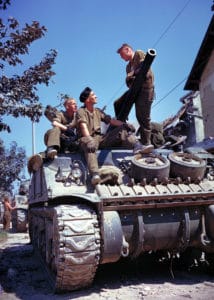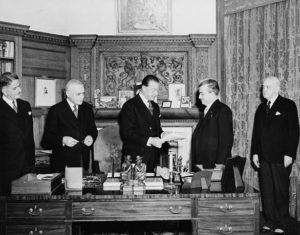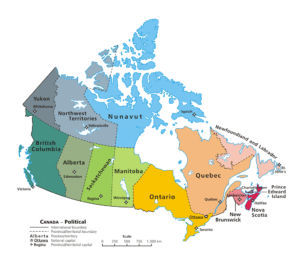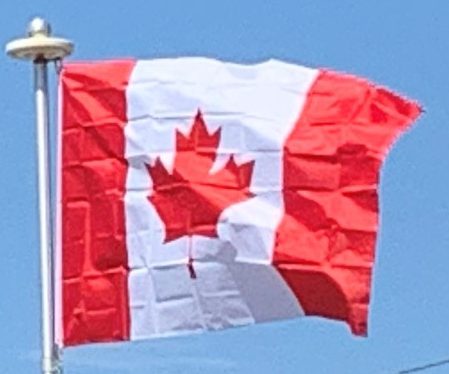The first Canadian Army units arrived in Britain in December 1939. In all, over a million Canadians served in the armed forces during World War II and approximately 42,000 were killed and another 55,000 were wounded. Canadian troops played important roles in many key battles of the war, including the failed 1942 Dieppe Raid, the Allied invasion of Italy, the Normandy landings, the Battle of Normandy, and the Battle of the Scheldt in 1944. Canada provided asylum for the Dutch monarchy while that country was occupied and is credited by the Netherlands for major contributions to its liberation from Nazi Germany.

The Canadian economy boomed during the war as its industries manufactured military materiel for Canada, Britain, China, and the Soviet Union. Despite another Conscription Crisis in Quebec in 1944, Canada finished the war with a large army and strong economy.
Contemporary Era:
The financial crisis of the Great Depression had led the Dominion of Newfoundland to relinquish responsible government in 1934 and become a crown colony ruled by a British governor. After two bitter referendums, Newfoundlanders voted to join Canada in 1949 as a province.

Canada’s post-war economic growth, combined with the policies of successive Liberal governments, led to the emergence of a new Canadian identity, marked by the adoption of the Maple Leaf Flag in 1965, the implementation of official bilingualism (English and French) in 1969, and the institution of official multiculturalism in 1971. Socially democratic programs were also instituted, such as Medicare, the Canada Pension Plan, and Canada Student Loans, though provincial governments, particularly Quebec and Alberta, opposed many of these as incursions into their jurisdictions.
Finally, another series of constitutional conferences resulted in the Canada Act, the patriation of Canada’s constitution from the United Kingdom, concurrent with the creation of the Canadian Charter of Rights and Freedoms. Canada had established complete sovereignty as an independent country, although the Queen retained her role as monarch of Canada. In 1999, Nunavut became Canada’s third territory after a series of negotiations with the federal government.

At the same time, Quebec underwent profound social and economic changes through the Quiet Revolution of the 1960s, giving birth to a secular nationalist movement. The radical Front de libération du Québec (FLQ) ignited the October Crisis with a series of bombings and kidnappings in 1970 and the sovereignist Parti Québécois was elected in 1976, organizing an unsuccessful referendum on sovereignty-association in 1980. Attempts to accommodate Quebec nationalism constitutionally through the Meech Lake Accord failed in 1990. This led to the formation of the Bloc Québécois in Quebec and the invigoration of the Reform Party of Canada in the West. A second referendum followed in 1995, in which sovereignty was rejected by a slimmer margin of 50.6 to 49.4 percent. In 1997, the Supreme Court ruled unilateral secession by a province would be unconstitutional and the Clarity Act was passed by parliament, outlining the terms of a negotiated departure from Confederation.
